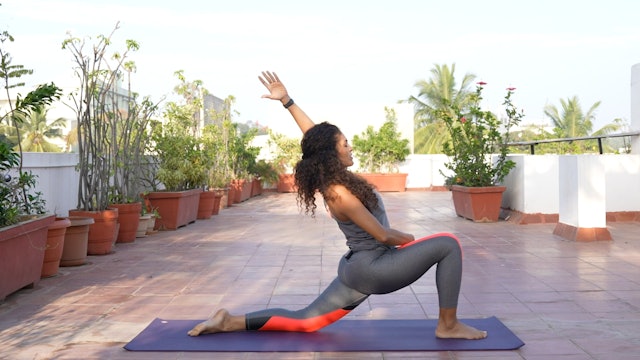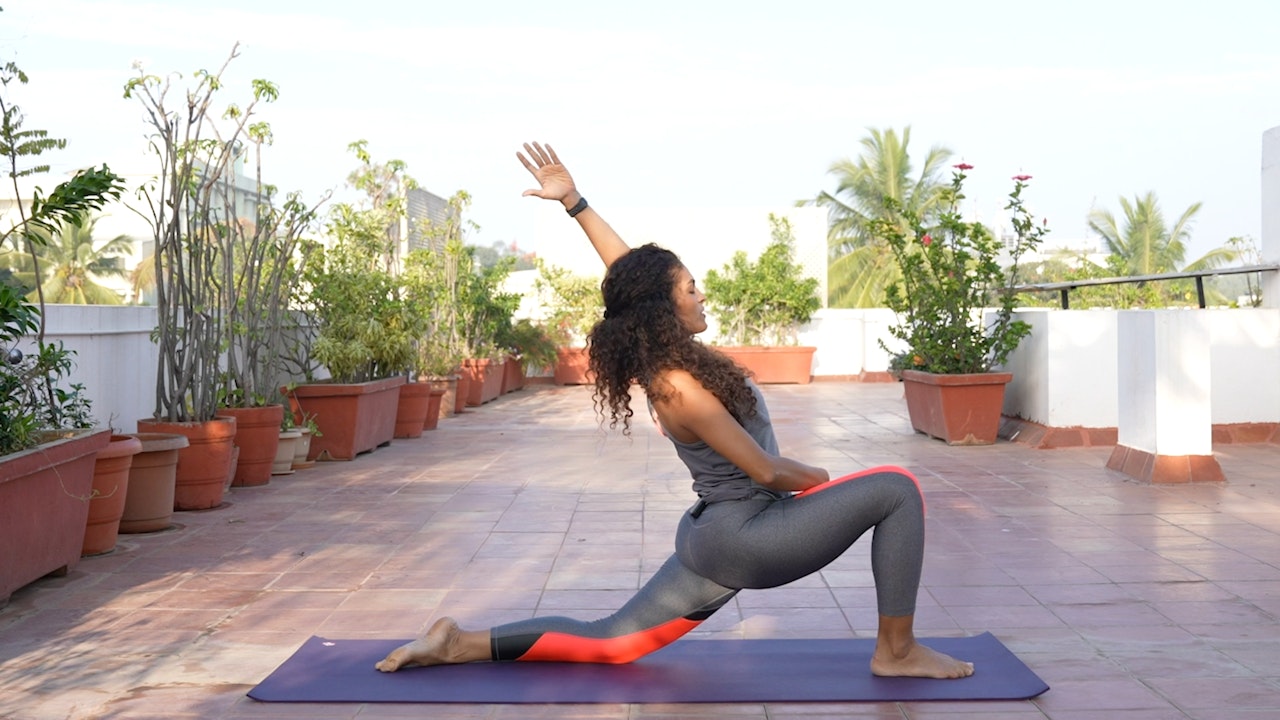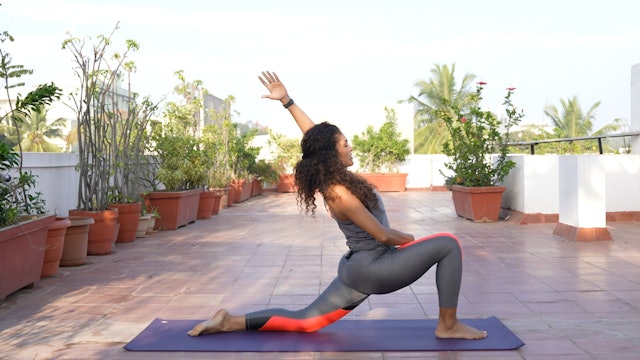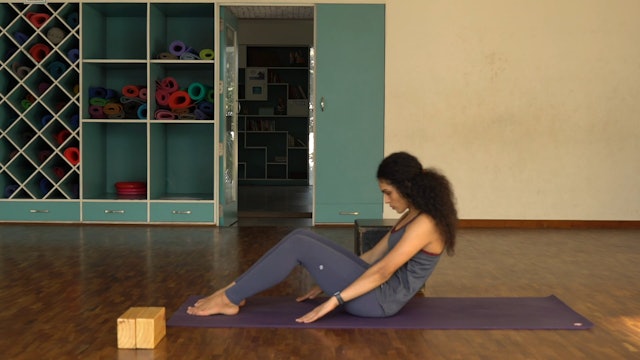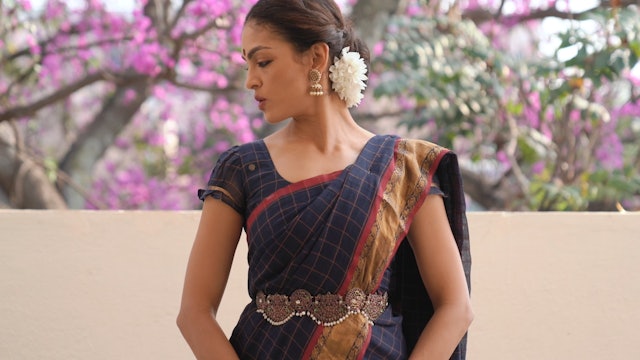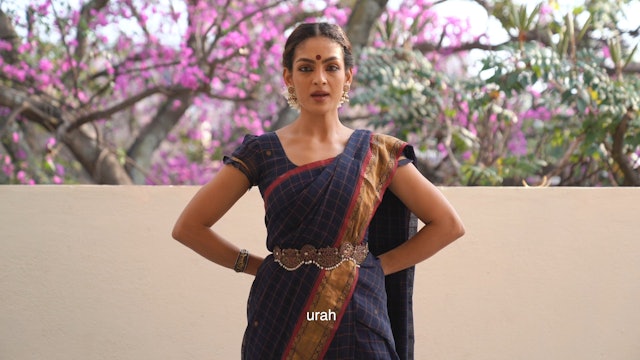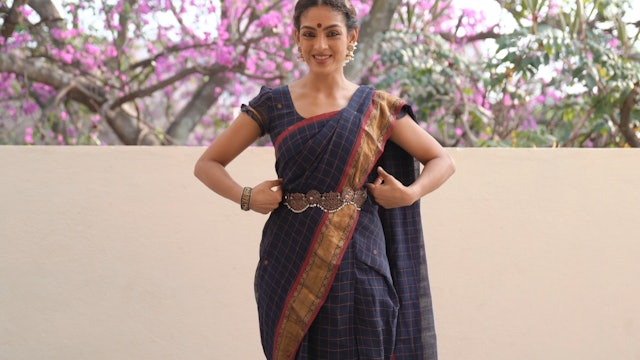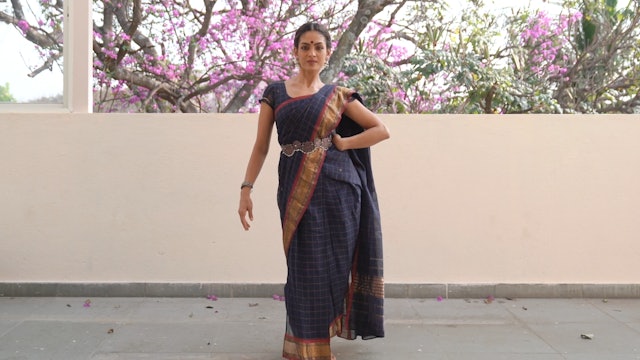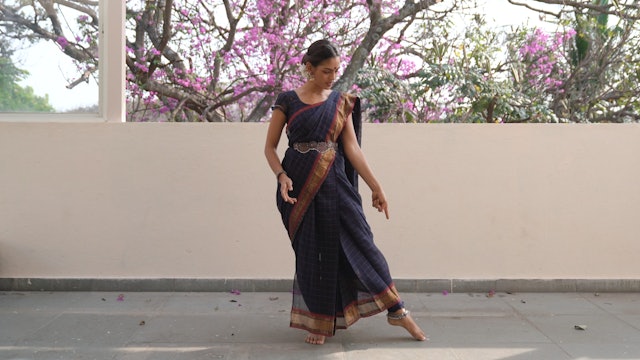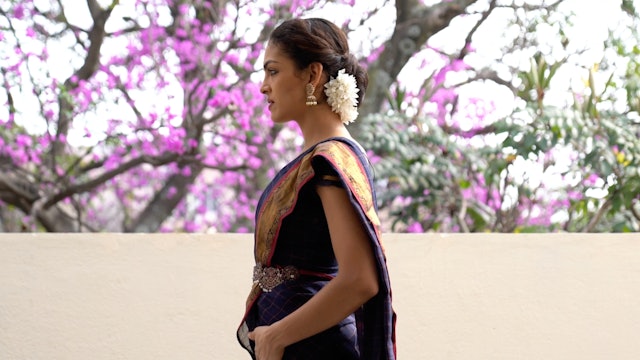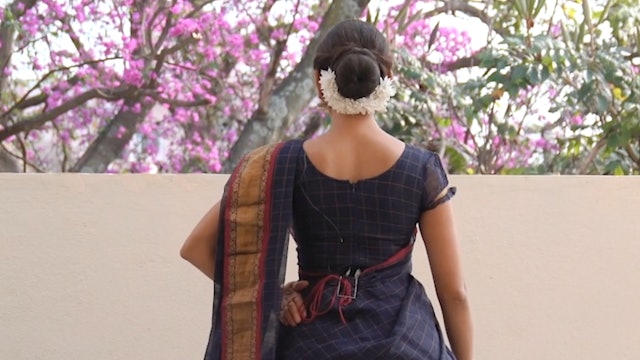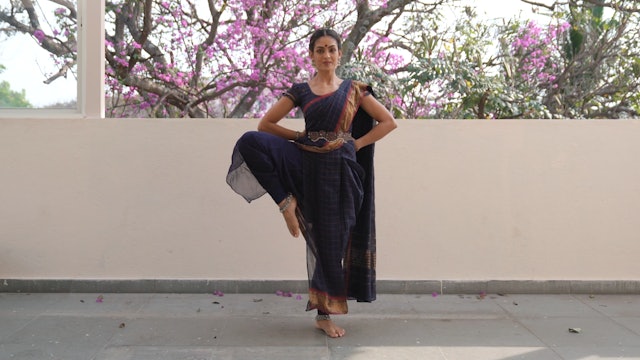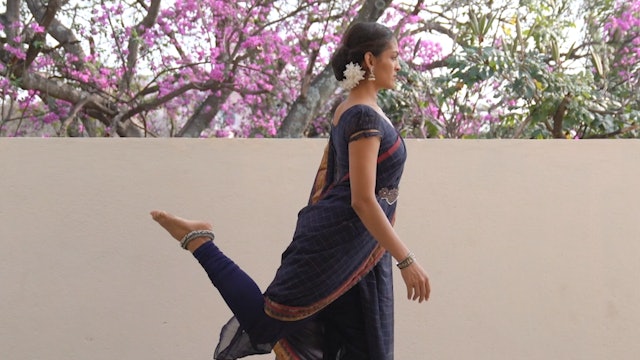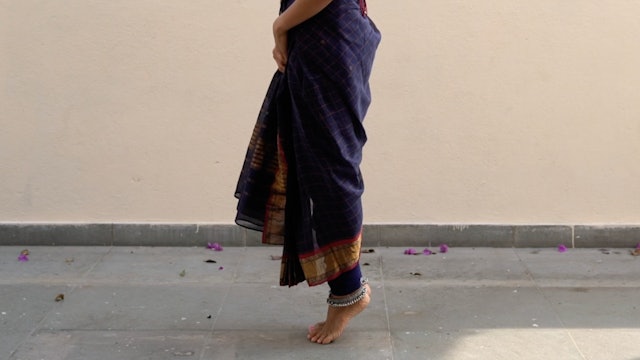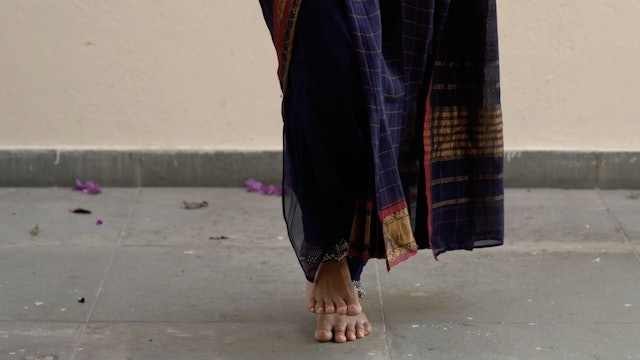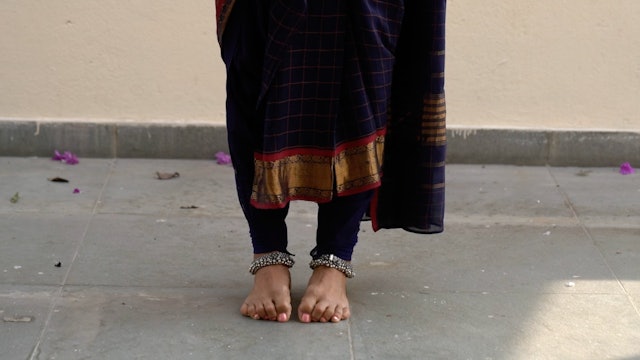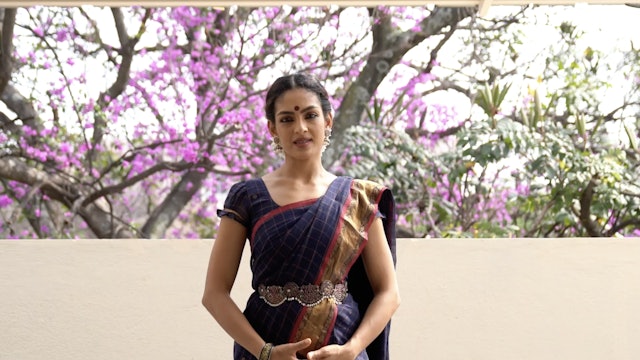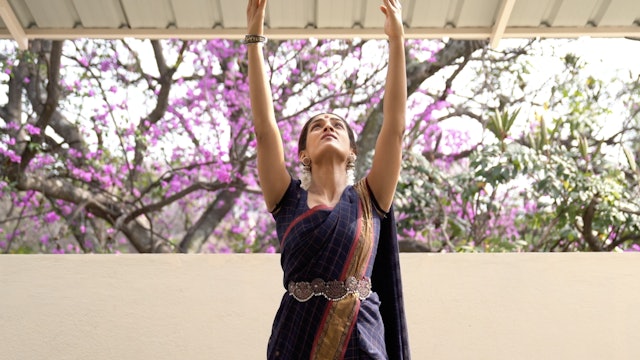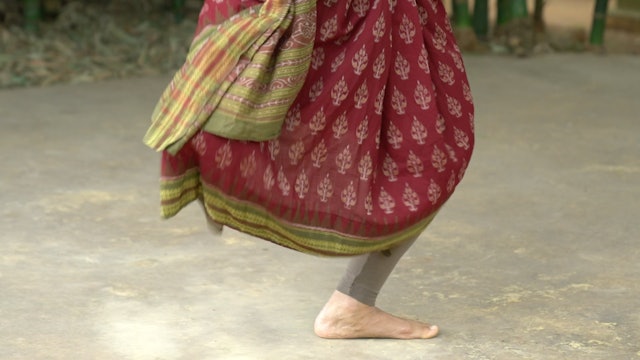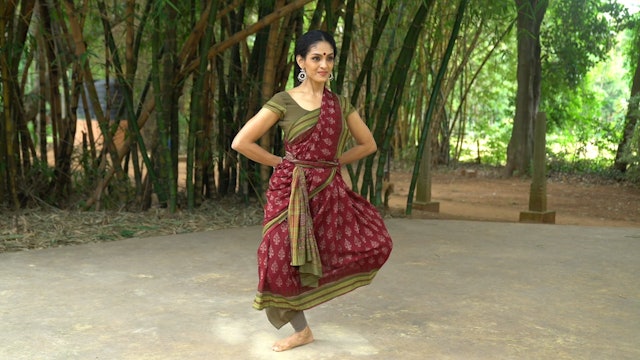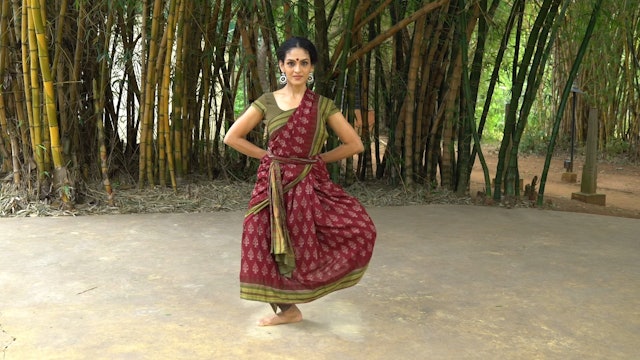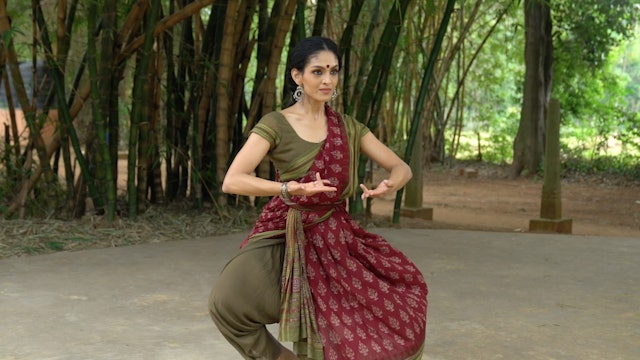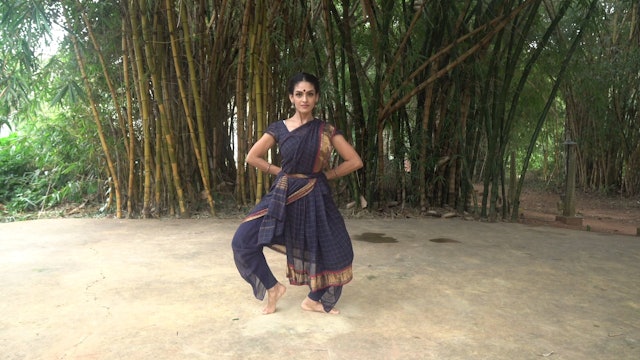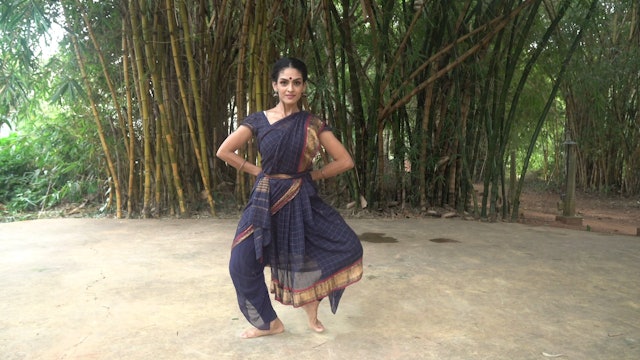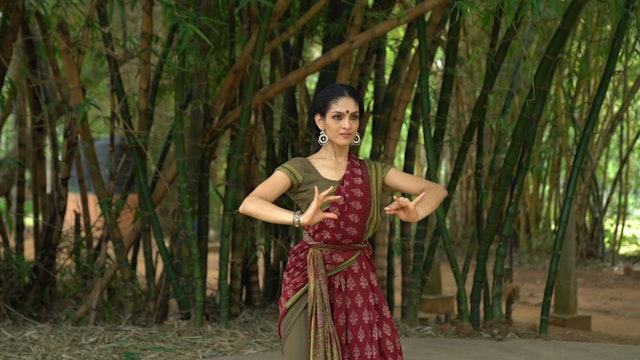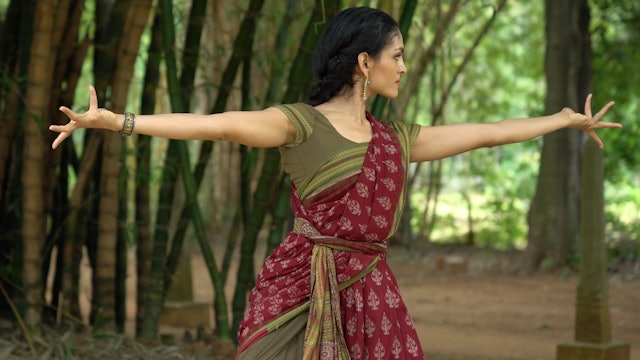Playlist 34
After having completed the second set of advaus, it is important to revisit strength exercises and begin adavu practise from the beginning again. This playlist and the next few following, will revisit some of the basic adavus as we continue to progress and challenge our strength. The playlist completes the Alaripu and also introduces the Raadha Kalpa warm-up, level 2.
The Bahu bheda is also introduced in this playlist.
-
The complete Raadha Kalpa Warm Up: Level 2
This Warm- up adds a few more variations to the previously introduced warm-up and expects that your strength has progressed, so please make certain that you have practised the following though the past months, atleast 5 times each, slowly with awareness before doing this warm-up.
Legs and core 1...
-
Obliques, flat backs and legs
This introduces the flat back and builds muscles in the back. It is recommended that you do this sequence after you lengthen your hamstrings to prevent your back from curving. It also introduces a lowering action on your quadriceps which will help build stronger legs.
The flexibility series tha...
-
Shiro bheda Shloka
The head is considered one of the Angas, or major limbs according to the Natyashastra.
The movements of the head are used not only for the precise control in the execution of Nritta but also to communicate meaning in the context of gesture.
Please refer to the Shloka below for pronunciation. ...
-
Urō bheda Shloka
The chest or Uras is considered one of the Angas according to the Natyashastra. The movements of the chest are used not only for the precise control in the execution of Nritta but also to communicate meaning in the context of gesture.
Please refer to the Shloka below for pronunciation. Please no...
-
Pārśva Bheda Shloka
The side, Parshva is considered one of the Angas, or major limbs according to the Natyashastra.
The movements of the side are used not only for the precise control in the execution of Nritta but also to communicate meaning in the context of gesture.
Please refer to the Shloka below for pronun...
-
Katī bheda Shloka
The hips are considered one of the Angas, or major limbs according to the Natyashastra.
The movements of the hips and waist are used not only for the precise control in the execution of Nritta but also to communicate meaning in the context of gesture.
Please refer to the Shloka below for pronun...
-
Pādah bheda Shloka
The feet are considered one of the Angas, or major limbs according to the Natyashastra.
The movements of the feet are used not only for the precise control in the execution of Nritta but also to communicate meaning in the context of gesture.
Please refer to the Shloka below for pronunciation. P...
-
Udara bheda Shloka
The stomach is considered one of the Upāngas, or minor limbs.
The movements are used primarily to communicate meaning in the context of gesture.
Please refer to the Shloka below for pronunciation. Please note that the separate movements of the head when put together in a Shloka form 'Sandhis', ...
-
Ūru bheda Shloka
The thighs are considered one of the Upāngas, or minor limbs according to the Natyashastra.
The movements of the thighs are used not only for the precise control in the execution of Nritta but also to communicate meaning in the context of gesture.
Please refer to the Shloka below for pronunciat...
-
Jānu bheda Shloka
Jānu bheda according to the Sangīta Ratnākara, is an Upānga. The knees are considered one of the minor limbs.
The movements of the knees are used not only for the precise control in the execution of Nritta but also to communicate meaning in the context of gesture. Some of the positions elucidate...
-
Janghā bheda Shloka
The shins/ shanks are considered one of the Upāngas, or minor limbs according to the Nātyaśāstra
The movements are used not only for the precise control in the execution of Nritta but also to communicate meaning in the context of gesture.
Please refer to the Shloka below for pronunciation. Plea...
-
Pārśni bheda Shloka
The heels are considered one of the Upāngas, or minor limbs
The movements are used not only for the precise control in the execution of Nritta but also to communicate meaning in the context of gesture.
Please refer to the Shloka below for pronunciation. Please note that the separate movements ...
-
Gulphā bheda Shloka
The Ankle is considered one of the Upāngas, or minor limbs according to the Sangīta Ratnākara.
The movements of the ankle are important in pure dance and in emotive contexts.
Please refer to the Shloka below for pronunciation. Please note that the separate movements of the head when put togethe...
-
Thala bheda Shloka
The soles of the feet are considered one of the Upāngas, or minor limbs.
The movements are used not only for the precise control in the execution of Nritta but also to communicate meaning in the context of gesture.
Please refer to the Shloka below for pronunciation. Please note that the separat...
-
Bāhu bheda Introduction
The arms considered one of the Upāngas, or minor limbs, has many movement possibilities enumerated in the Natyasāstra.
The movements are used primarily to communicate meaning in the context of gesture and also clear articulation in dance or nritta.
-
Bāhu bheda Shloka
The arms considered one of the Upāngas, or minor limbs.
The movements are used primarily to communicate meaning in the context of gesture and also clear articulation in dance or nritta.
Please refer to the Shloka below for pronunciation. Please note that the separate movements of the head when...
-
Thattadavu 1
The Thattadavu introduces concepts of rhythm to the beginner student through various patters of striking the floor with the foot. Do these in sequence to progressively build clarity in the articulation of the foot with the floor. Keep your hips stable and try not to move from side to side. It is ...
-
Thattadavu 3
The Thattadavu introduces concepts of rhythm to the beginner student through various patters of striking the floor with the foot. Do these in sequence to progressively build clarity in the articulation of the foot with the floor. Keep your hips stable and try not to move from side to side. It is ...
-
Thattadavu 5
The Thattadavu introduces concepts of rhythm to the beginner student through various patters of striking the floor with the foot. Do these in sequence to progressively build clarity in the articulation of the foot with the floor. Keep your hips stable and try not to move from side to side. It is ...
-
Kudiita Thattaduvu
Pointers for Kuditta Thattadavu:
Try to go down instead of hopping up each time you snatch onto your heels.
Keep dropping your tailbone and pushing your thighs back.
When you bend to the side, elongate your lower side, so the length of your top side and bottom side remain the same.
Do not push... -
Thattu Mettadavu 3 : Khandam
This Adavu has two components, a tapping action with one foot that comprises of the Thattu, and the Udgattitham action on the other leg with a heel. Sometimes both the tap and the Udgattitam can happen on the same foot, depending on the Jathi.
Pointers:
- Try to make sure the heel is lifted prop... -
Thattu Mettadavu 4 : Mishram
This Adavu has two components, a tapping action with one foot that comprises of the Thattu, and the Udgattitham action on the other leg with a heel. Sometimes both the tap and the Udgattitam can happen on the same foot, depending on the Jathi.
Pointers:
- Try to make sure the heel is lifted prop... -
Pakkadavu 1
Pointers for Pakkadavu 1:
Watch the level of your arms. Make sure you maintain the length of your neck. Turn to the side with your head straight, without tilting. Keep your eyeballs in the centre of your eyes. When you reach to the side, do not raise the opposite elbow. maintain length.
The ...
-
Pakkadavu 2
Pointers for Pakkadavu 2:
Keep your shoulders down when stretching your arms.
Keep the height of the arm that you are looking away from. It is common to let this arm go too far back or let it drop below shoulder height.
Keep your head straight when you look to the side.
Make sure you keep you...
